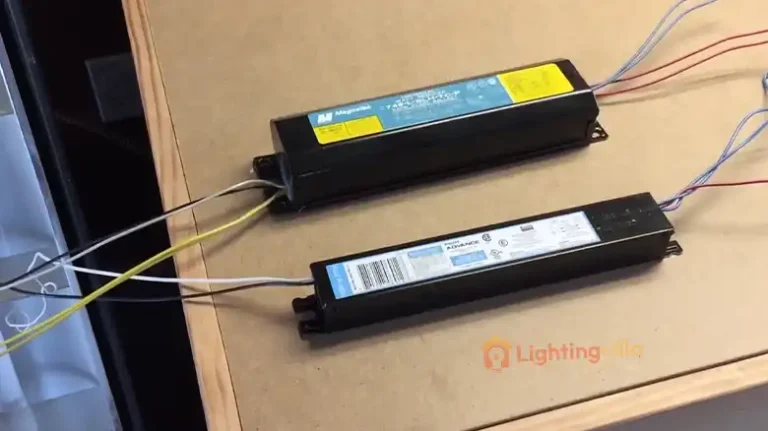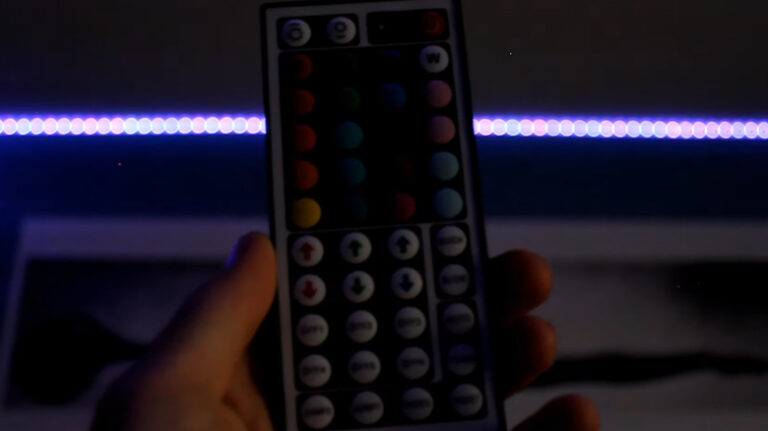LED Lights Dim and then Brighten (Reasons and Solutions)
When lights are dimming in just one room, it usually means a circuit overload that is easy to fix. But things can be more complicated when the lights dim and brighten the entire house. It will be disgusting if your LED lighting suddenly dims and brightens. Even it can hamper your regular activities. Unfortunately, this problem is widespread, and people may face it anytime. But when you face this issue, it is essential to address the situation as soon as possible.
However, the potential reasons your LED lights dim and then brighten can be faulty ballasts or wiring, power grid issues, or circuit overloads. Moreover, it can be for having old lights in a room for years.

Why Your Led Lights Dim then Brighten
Whenever the LED lights brighten, they take too much energy. Likewise, if the lights dim, they receive too little energy. As a result, you may receive so much or so little energy. In addition, there is a risk of further damage to your LED lights if the issue worsens.
So, if the Light dims and then brightens, you must figure out its exact reason. Besides, remember that you shouldn’t be upset and hopeless after facing this issue because the amazing thing is that you can fix the issue instantly. Now in this article, I’ll share the potential reasons that this issue can occur and the solution.
Reason 1. Faulty Wiring
Unexpectedly your LED Light can dim and brighten because of faulty wiring. When the wiring of your house is not strong enough or old to maintain the amount of current it uses, this issue happens. The reason is that an old house can’t be built to serve today’s modern households because these houses feature many appliances and devices that apply large amounts of electricity.
Reason 2. Old LED Light Bulb
In general, the lamp and bulb life hours can indicate how long your LED bulb will last through its use. However, the Light can be for a couple of hours, approximately 750 to 2000. Your light bulb can only put out 70 percent of the Light after its stated lifespan that the Light did before or more. Moreover, different components wear out differently as light ages causing your lights to dim or brighten.
Reason 3. Faulty Ballasts
It would help if you remembered that, for keeping the LED Light in place, ballasts allow them the proper amount of electricity at the optimal voltage frequency. Some lights also need special startup conditions, often led by ballasts. So, this leading can malfunction as ballasts age. On the contrary, current or voltage levels may fluctuate, resulting in dim or bright lights.
Reason 4. Power Grid Problems
An electrical interruption or a transformer failure can come to your home. Strom often can cause such issues. Besides, there is the likelihood of brownouts that indicates general dim lighting than blackouts. But the issues can happen if there is an unusually high energy demand or a city power shortage.
Reason 5. Circuit Overloads
When your LED lights dim while turning on your clothes dryer, air conditioner, or microwave, you most likely have a circuit issue. However, almost every house’s electrical circuit has a maximum power draw. If you connect more devices to one circuit, it creates more power usage. So, to balance this out, the current flowing through the LED lights will decrease, causing your lights to dim.
Fix Your LED Lights Dimming then Brightening Problem with These Solutions
These are the probable cases of your problem. So, by figuring out the cause, you must prepare yourself to fix it immediately. Otherwise, the problem will be worse and out of control. Now I’m sharing five different solutions for your problem.
Solution 1. Upgrade Your Wiring
When the LED lights only flicker when you turn on heavy appliances such as the air conditioner, it can be for faulty wiring. By re-wiring the wiring, you can look into a service upgrading your home for this equipment.
Solution 2. Change Your LED Light Bulb
If your LED lights are dimming and brightening due to having an old Light bulb, you need to replace the Light bulb to solve the issue immediately. It would help if you always checked the light bulbs in the light fixture before doing anything else. Because, more often than not, the general issue can be the reason for your troubles.
Solution 3. Replace faulty Light Switches
If your led Light switches are faulty, they will result in flickering lights. This dimming and brightening are due to faulty light switches that can not connect to the Light bulb. The ideal thing you can do is to replace your defective LED Light switches with an expert or electrician.
Solution 4. Wait Out a Brownout
Sometimes, the cause of flickering or dimming lights is brownouts. Due to the bad weather, your electrician must have deliberately reduced the supply to confine a complete blackout. Unfortunately, you must wait out the brownout with a flashlight on hand and unplug your devices to prevent them from getting damaged by the low voltage.
Solution 5. Replacement of the Light Fixture
Sometimes, taking out your entire light fixture may be in order if you have tried everything else. Moreover, you can replace it with an expert or professional. However, when you can gather enough confidence to take up the challenge, you can replace the light fixture by yourself.
However, the average lifespan of an LED light is often up to 50,000 hours which indicates 50 times longer than a conventional incandescent. In addition, 20 to 25 times longer than traditional halogen light. Even a LED light is 8 to 10 times longer than a typical CFL light. In a nutshell, if you use your LED lights at 50,000 hours, it will last more than one year.
So, don’t panic if any issues you face with your Light. YOu should go ahead and fix any issue related to your LED lights to keep them long-lasting.
Now I’m providing a video link with which you can understand how to fix a flickering LED light.
Frequently Asked Questions
What Does It Mean by LED Ghosting?
Ghosting is an issue that can be occurred when your LED lights can faintly glow even if the light switch is off. In general, ghosting occurs due to current leakage, and it is a common issue seen with neon-illuminated switches. Manufacturers design LED illuminated switches to eliminate this phenomenon when one uses them with LED bulbs and fixtures.
Is It Natural for a Light to dim Occasionally and Then Return to Normal?
Yes, this incident is quite normal. However, the power sent to a home by the utility company indeed fluctuates in voltage much of the time. When the voltage falls, and surges are within the specifications set by the power company, you can consider it natural.
Should I Be Tensed If My LED Light Flickers?
In general, the flickering seems danger-free. Sometimes it can signify a more serious underlying problem with the electrical wiring. Even that can present a dangerous fire hazard to a home. In practice, if the flickering increases or changes in any way, you should call an electrician for an inspection just to be secured.
Can Flickering Damage My Lights?
Flickering is a result of fluctuation. Moreover, sometimes it can be for a deduction in the circuit voltage that makes your lights dim for a brief moment. Besides, these rather abrupt changes from low to high voltage can hamper your electronics. Furthermore, sometimes this can even cause an electrical fire.
Conclusion
Since LED lights consume far less electricity than incandescent light bulbs, they will greatly reduce your electricity expense. So, it would help if you kept your LED lights safe and secured all the time. Besides, it would help if you kept in mind that ignoring flickering lights can lead to electrocution, electric shock, or often a spark that causes a house fire. So, it would help if you did not ignore flickering lights.
Unlike incandescent light bulbs, Led lights don’t produce Light using heat. So, this part makes them so energy efficient. But there is a downside the LED light components may be sensitive to overheating. As a result, overheating can cause them to burn out permanently.






